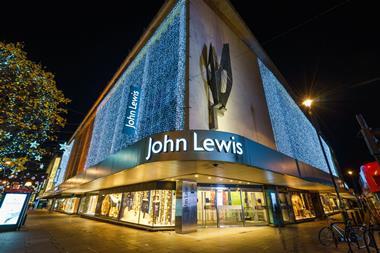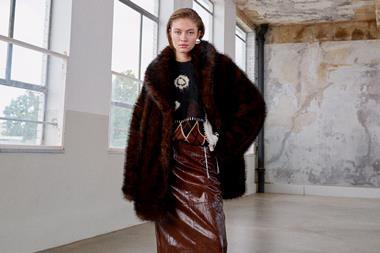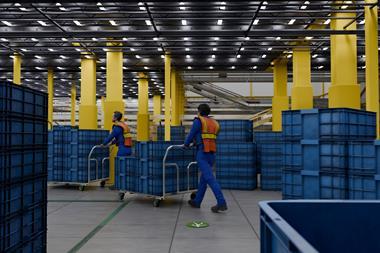The lifting of import quotas from China this month signals cost savings for retailers, but shipping goods from the country still won’t be plain sailing. Charlotte Dennis-Jones investigates
The new year brings with it a significant change for fashion retailers, as the import textile quotas for China that were controversially imposed by the EU in 2005 are finally lifted.
So how will this affect retailers? On the surface, it spells good news. Not having to pay quotas will mean they can source goods more cheaply from China, although the extent to which consumers might benefit from such savings remains to be seen.
Retailers are also better prepared than they were three years ago. Back then, many of those that had ploughed resources into sourcing from the region were shaken when quotas suddenly forced them to turn elsewhere. Lessons learned from putting all their eggs in one basket are engrained firmly in retailers’ minds, says AT Kearney partner Hana ben Shabat.
And, since then, other countries from which to source have emerged. Places such as Egypt can compete with China in terms of price and beat it in terms of the time it takes to ship the goods. Furthermore, while China affords huge advantages with regard to cheap mass production, shipping goods from the region can become a “logistical nightmare”, says ben Shabat.
Nonetheless, these post-quota months are no time to breathe a sigh of relief. EU trade commissioner Peter Mandelson stated in December that he plans to use all the instruments at his disposal if the lifting of quotas causes a sudden upsurge in Chinese imports. Lawmakers and MEPs have urged Mandelson not to hesitate to use “trade defence instruments” to ensure “Europe can compete on a level playing field”.
But many retailers are not planning a major shift in their buying strategy this year. John Lewis overseas buying manager Phillip Worrall believes that some production, which had been moved to regions including the Philippines, Thailand and Vietnam, may return to China, but “we are not seeing a dramatic change”, he says. BRC director for Europe Alisdair Gray expects a gradual increase in sourcing from China of about 5 per cent by the end of 2008.
Although initial changes appear likely to be relatively minor, rest assured the EU Commission will be watching like a hawk. One mechanism that it has left in its defence is the anti-dumping duty, where retailers might well come unstuck. If European suppliers and manufacturers suspect that goods are being imported and sold for less than the production cost, their claims will be thoroughly investigated. If dumping is confirmed, theoretically a duty of as much as 100 per cent can be slapped onto that category.
PricewaterhouseCoopers international trade consultant Emma Ormond says that if duties are imposed, spring/summer and autumn/winter collections for 2008 will be safe because of the length of time investigations take. But these taxes might pose problems for 2009 products. “If you have goods that are already on the water, it would completely mess up costings,” she warns. Certain categories, such as knitwear and trousers are also more at risk than others, because they are more likely to be manufactured in Europe and therefore more prone to anti-dumping duty.
Tough opposition
The EU Commission has a history of being unsympathetic to retailers’ concerns about anti-dumping duties. Gray says that, while Mandelson has listened increasingly to the pressures facing retailers, other commissioners have not. “Many think that if you source from China, you get what you deserve,” says Gray. A country that is likely to prove particularly difficult is France, he adds. President Sarkozy – whose brother had a textiles business that went bust because it couldn’t compete with China – has always been the most vocal in wanting to keep the quotas.
When Italian footwear manufacturers applied for an anti-dumping mechanism in 2006, retailers united against the move and, says Ormond, “became a powerful lobbying voice”. Should they come up against such hurdles again, a similarly unified stance will be crucial. “Mandelson did listen back then – the anti-dumping duty could have been a lot higher. They need to work together to get clear messages across to the Commission,” she urges.
John Lewis is doing just that. Worrall says that by working closely with the BRC, the retailer can keep a close eye on the issue of anti-dumping quotas. Crucially, he says, this means it will have maximum advance warning about any such duties.
The BRC urges every retailer to work with it on these issues. Gray says: “They shouldn’t just think it’s all over and give up. We’re going through a difficult economic period and yet the Commission tends not to see the wider retail picture. This is all about how UK retailers can plan their businesses and give consumers value.”
Gray says Mandelson has come to realise that retailers are not the greedy, profiteering corporations that he once assumed they were and now consults openly with the BRC. However, countless other euro-elected MPs have yet to soften in their approach towards China. What’s more, it’s unlikely that they will, unless retailers make every effort to convince them otherwise.
CASE STUDY OF A UK RETAILER*
Quota savings can represent 5-25 per cent of the garment cost
Garment Net cost Cost of quota charged Garment cost Anticipated savings
Formal shirt £4.50 £1.30 £5.80 22%
Viscose jumper £9.65 £1.55 £11.20 14%
Short-sleeved blouse£5.60 £0.70 £6.30 11%
T-shirt £4.00 £1.10 £5.10 22%
Bra £6.62 £0.38 £7.00 5%
Jeans £13.20 £1.30 £14.50 9%
* Figures have been changed to maintain retailer confidentiality, but percentage savings are accurate


























No comments yet